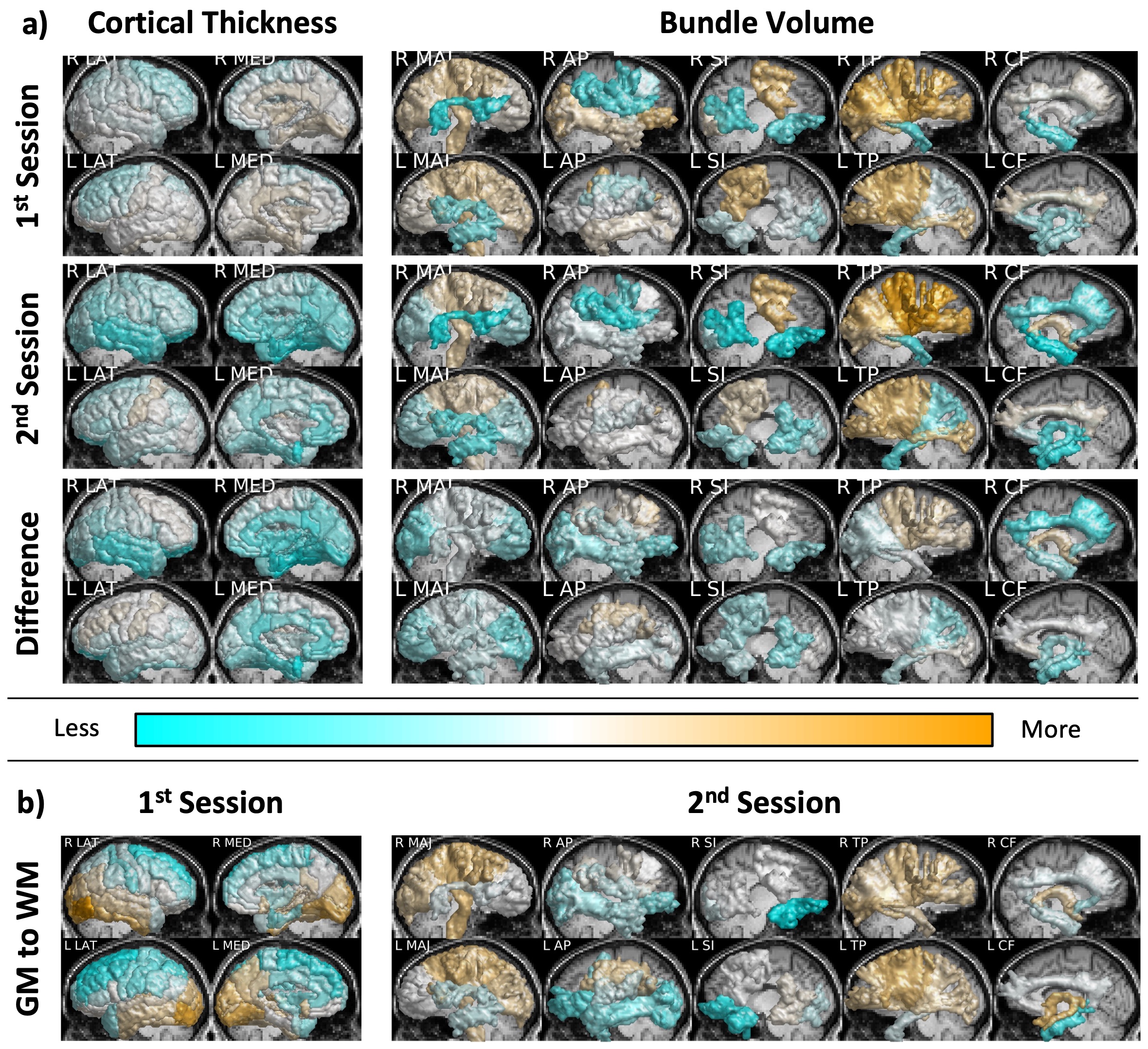Joint independent component analysis for hypothesizing spatiotemporal relationships between longitudinal gray and white matter changes in preclinical Alzheimer’s disease
Leon Y. Cai, Francois Rheault, Cailey I. Kerley, Katherine S. Aboud, Lori L. Beason-Held, Andrea T. Shafer, Susan M. Resnick, Lori C. Jordan, Adam W. Anderson, Kurt G. Schilling, and Bennett A. Landman
Abstract
Characterizing relationships between gray matter (GM) and white matter (WM) in early Alzheimer’s disease (AD) would improve understanding of how and when AD impacts the brain. However, modeling these relationships across brain regions and longitudinally remains a challenge. Thus, we propose extending joint independent component analysis (jICA) into spatiotemporal modeling of regional cortical thickness and WM bundle volumes leveraging multimodal MRI. We jointly characterize these GM and WM features in a normal aging (n=316) and an age- and sex-matched preclinical AD cohort (n=81) at each of two imaging sessions spaced three years apart, training on the normal aging population in cross- validation and interrogating the preclinical AD cohort. We find this joint model identifies reproducible, longitudinal changes in GM and WM between the two imaging sessions and that these changes are associated with preclinical AD and are plausible considering the literature. We compare this joint model to two focused models: (1) GM features at the first session and WM at the second and (2) vice versa. The joint model identifies components that correlate poorly with those from the focused models, suggesting the different models resolve different patterns. We find the strength of association with preclinical AD is improved in the GM to WM model, which supports the hypothesis that medial temporal and frontal thinning precedes volume loss in the uncinate fasciculus and inferior anterior-posterior association fibers. These results suggest that jICA effectively generates spatiotemporal hypotheses about GM and WM in preclinical AD, especially when specific intermodality relationships are considered a priori.

Figure 7. Formulating spatiotemporal hypotheses about GM and WM relationships in preclinical AD. (a) Decreasing temporal thickness in parallel with decreases in bundle volume most notably in the anterior and posterior corpus callosum, cingulum, and anterior-posterior association fibers is identified in the joint approach and weakly associated with preclinical AD. The temporal relationships between the GM and WM changes remains unclear. (b) The focused GM to WM approach is more strongly associated with preclinical AD and suggests medial temporal and frontal thinning precedes relative loss of volume of the uncinate fasciculus and inferior anterior-posterior association fibers.